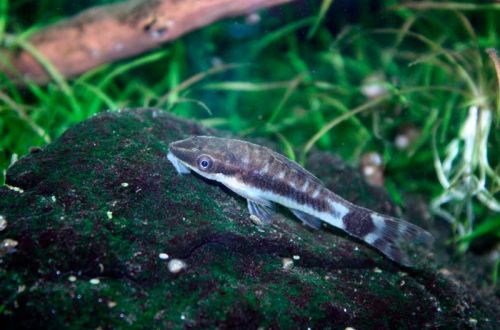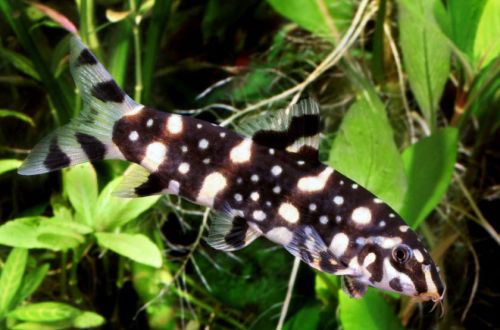
Magnum Pleco
Magnum Pleco, scientific name Baryancistrus chrysolomus, belongs to the family Loricariidae (Mail catfish). A rather large member of this family, which is also notable for its difficult disposition, which makes it difficult to choose compatible species, especially in small aquariums.

Contents
Habitat
Comes from South America. It is found in the Brazilian state of Para in the Xingu River basin (the right tributary of the Amazon). Prefers sections of rivers with moderate flow and rocky substrates, hiding on the bottom between boulders.
Brief information:
- The volume of the aquarium – from 250 liters.
- Temperature – 27-32°C
- Value pH — 6.0–7.5
- Water hardness – 2-12 dGH
- Substrate type – sandy or rocky
- Lighting – any
- Brackish water – no
- Water movement – moderate or strong
- The size of the fish is up to 21 cm.
- Nutrition – foods with a high content of plant components
- Temperament – inhospitable
- Content alone or in a group
Description
Adult individuals reach a length of up to 21 cm. The fish has a somewhat flattened body and a large head. The scales are modified into sections, somewhat reminiscent of the lamellar chain mail of medieval knights, for which this family of these catfish got its name. The surface of the body is hard and rough, covered with small spines. The fins and tail are large fan-shaped, the first rays are thickened and are sharp spikes. The coloration is dark gray with a contrasting light edging of the fins. Sexual dimorphism is weakly expressed, there are no visible differences between male and female.
Food
In nature, the basis of the diet is diatoms and filamentous algae, which the fish scrapes off the surface of stones and snags. Together with them, small invertebrates living among aquatic vegetation also fall. In a home aquarium, the diet should be appropriate – it is necessary to use food with a high content of plant components, pieces of vegetables and fruits, as well as frozen or live bloodworms, brine shrimp, shrimp meat, mussels, etc.
Maintenance and care, arrangement of the aquarium
The optimal size of the aquarium for 2-3 catfish starts from 250-300 liters. Maintenance is not much of a hassle if the Magnum Pleco is in the right conditions. It is recommended that the design be chosen to resemble a fast-flowing riverbed with variable-sized rock substrates, gravel, and a few large boulders. An additional element of decor will be natural snags in the form of roots and branches of trees, unpretentious plants and mosses that can attach to the surface of snags and stones. For example, Anubias, Bolbitis, Microsorum pterygoid, Bucephalandra, etc. Bright lighting will promote the growth of algae – another source of food.
Like other fish living in nature in flowing waters, catfish do not tolerate the accumulation of organic waste and need clean water within acceptable temperature ranges and hydrochemical parameters. To do this, along with the placement of the necessary equipment, they carry out regular procedures for cleaning the aquarium, weekly replace part of the water (40–70% of the volume) with fresh water. It is also important to ensure a high level of dissolved oxygen in the water, so auxiliary aeration will not be superfluous.
Behavior and Compatibility
Young catfish are peaceful and get along well with other fish. However, with age, the behavior of males changes, they become intolerant of relatives and neighbors in the aquarium, perceiving them as a threat to their territory. It is advisable to select fish that live in the water column or near the surface and, accordingly, avoid combining with other catfish. In large tanks, this problem is not so acute.
Breeding / breeding
Due to the impossibility of determining gender and behavior, breeding will require a group of 4-5 fish and a tank with a large surface area so that each male (if there is more than one) has enough space. Under favorable conditions, the probability of spawning increases significantly. With the onset of the mating season, the male or males begin courtship. When the female is ready, the catfish form a clutch of several dozen eggs, after which the female swims away. The protection and care of future offspring falls entirely on the shoulders of the male.
Fish diseases
The cause of most diseases is unsuitable conditions of detention. A stable habitat will be the key to successful keeping. In the event of symptoms of the disease, first of all, the quality of the water should be checked and, if deviations are found, measures should be taken to correct the situation. If symptoms persist or even worsen, medical treatment will be required. Read more about symptoms and treatments in the Aquarium Fish Diseases section.





